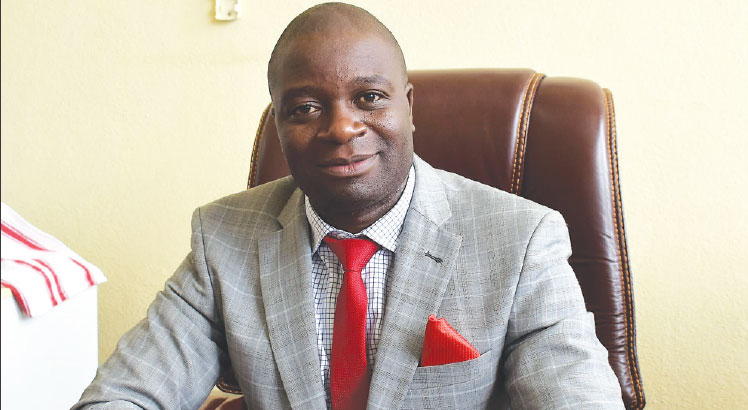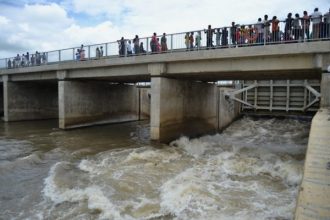99% default in Malata subsidy
Government has only recovered K110 million or less than 1 percent of the K14 billion loans to beneficiaries of one of President Peter Mutharika’s pet projects, the Malata Subsidy programme, officials have revealed.
Ministry of Lands, Housing and Urban Development spokesperson Tinashe Chikwemba said in an interview on Tuesday that loan repayment for the programme has been a challenge because beneficiaries claim the building materials they received were a government gift to them.

“So far, a total of K110 million has been collected as repayment for the loans and we hope that the amount will rise. We are working round the clock sensitising the beneficiaries that the materials were given to them as loans which have to be repaid so that others can also benefit from the facility,” Chikwemba said.
According to the programme’s concept note, government planned to build 66 000 units for the poor—70 houses per constituency—on a 50 percent subsidy every year. Five thousand of the units were supposed to be grants to the ultra-poor. The total cost of the project, which was planned to run for five years—from 2014 to 2019—was K39 billion.
Chikwemba said since inception of the programme, K24.5 billion has been spent for both houses and for administration.
But, according to records at Ministry of Lands, Housing and Urban Development which is coordinating the project, as at August this year, government had only built 26 000 houses at a total cost of K14 billion.
Under the programme, beneficiaries are poor people in the villages who are identified by village and area development committees. They are given material loans to acquire a maximum of 30 10-feet 29/30 gauge corrugated iron sheets and a maximum of 30 bags of cement of 50kg each and other related building materials, according to the concept note.
Other beneficiaries are people living in grass-thatched houses built with burnt bricks who want to improve their houses.
Each house is allocated K450 000 for materials and beneficiaries repay half the price at 10 percent interest.
According to Chikwemba, to date, only 20 houses have been built under the grant programme, transalating to an expenditure of K9 million at K450 000 per unit. This means that government is supposed to collect a total of K13.9 billion which was paid out as loans. The K110 million repaid represents a repayment of 0.79 percent.
Initially, beneficiaries were required to pay 10 percent of the subsidy loan as down-payment for the building materials to demonstrate ability to construct the house by having bricks ready, according to the concept note. But this requirement was taken out of the concept after realising that most beneficiaries could not afford such a requirement, according to Chikwemba.
Although the concept note does not state the period for loan recovery, Chikwemba explained that repayment is supposed to start at least four months after finishing construction of the house.
So far, out of the approved budget of K39.4 billion, Dahsp has accessed K14.128 billion; K2.3 billion in 2014/15; K4.3 billion in 2015/16 budget; K6 billion in 2016/17 and K1.5 billion in 2017/18, according to the programme’s progress report as at end of the 2017/18 financial year.
An amount of K10 billion was approved for the 2018/19 financial year, according to the project financial plan, but it was allocated K600 million in the current financial year.
According to Chikwemba, Ministries of Lands and Local Government work hand-in-hand on procurement of building materials although recovery of loans is done by local councils.
Chikwemba also acknowledged that there have been delays in delivering building materials to beneficiaries due to poor funding against the approved amount.
In random interviews with the programme’s district desk officers, we established that apart from the 26 000 beneficiaries whose units were completed, some people who received cement and nails early January this year are still waiting for iron sheets.
Some officers claimed the cement that the beneficiaries received was hardening up while others are now selling the cement to avoid losing out completely.
Ministry of Finance spokesperson Davies Saddo, in an earlier interview, said the programme remains one of the focal policy issues of government.
“Whenever resources are available, Treasury has always provided and will continue to support the programme,” he said.
Saddo said that a budget is formulated on assumption that resources will flow as planned.
On loan default, Saddo said Treasury is waiting for a performance report from Ministry of Lands, Housing and Urban Development on how the programme has fared in the past five years.
He said: “The Ministry of Lands is supposed to give us a report on how the programme has evolved, what were the challenges, Treasury will then be in a position to give it’s input on how best the issue of repayment should be handled.”
Mutharika’s other priority projects, which his administration vowed to implement at all costs, according to the party’s 2014 manifesto, include construction of community colleges and revival of the Shire-Zambezi Waterway Project. During the past five years, government has constructed 28 community colleges across the country. But the Shire-Zambezi Waterway Project has been at a standstill since the launch of the slab at Nsanje in 2011, awaiting a World Bank-funded feasibility study. n





